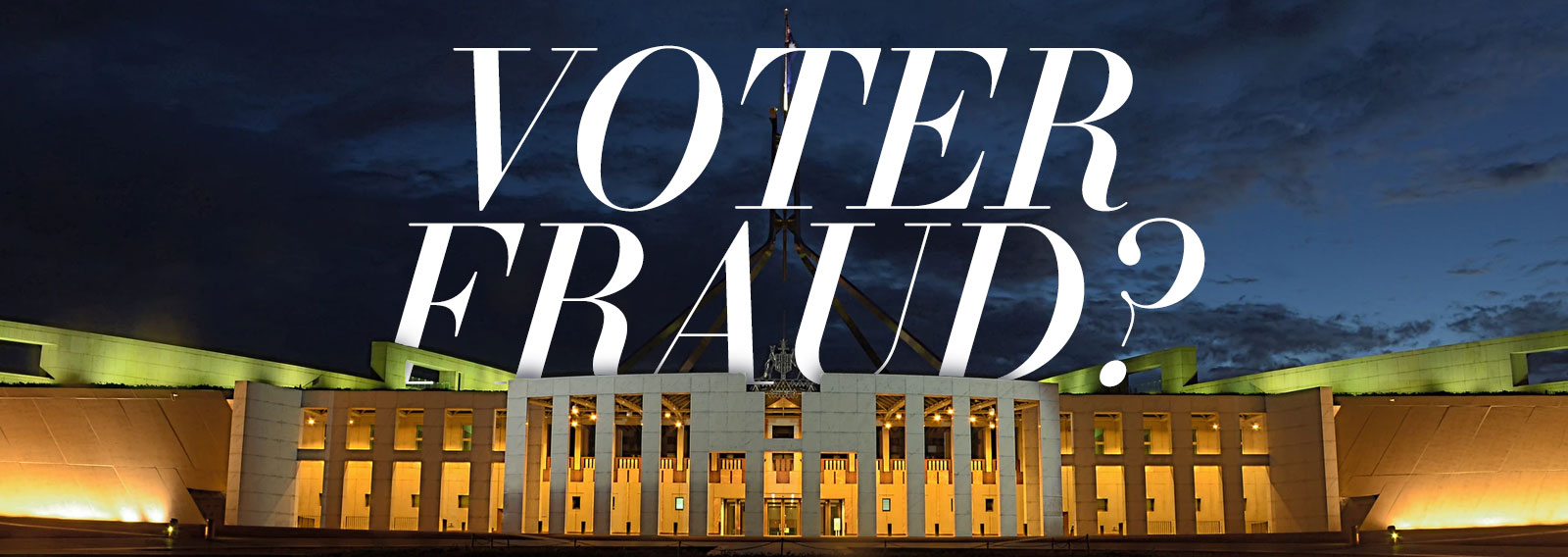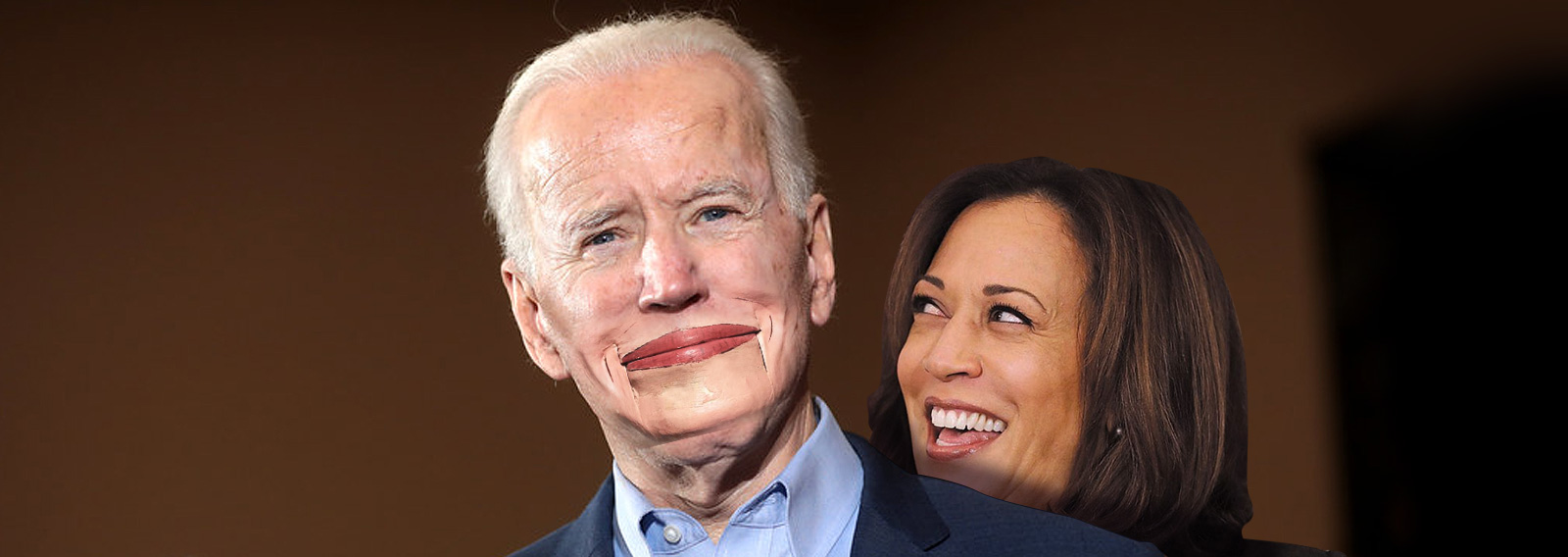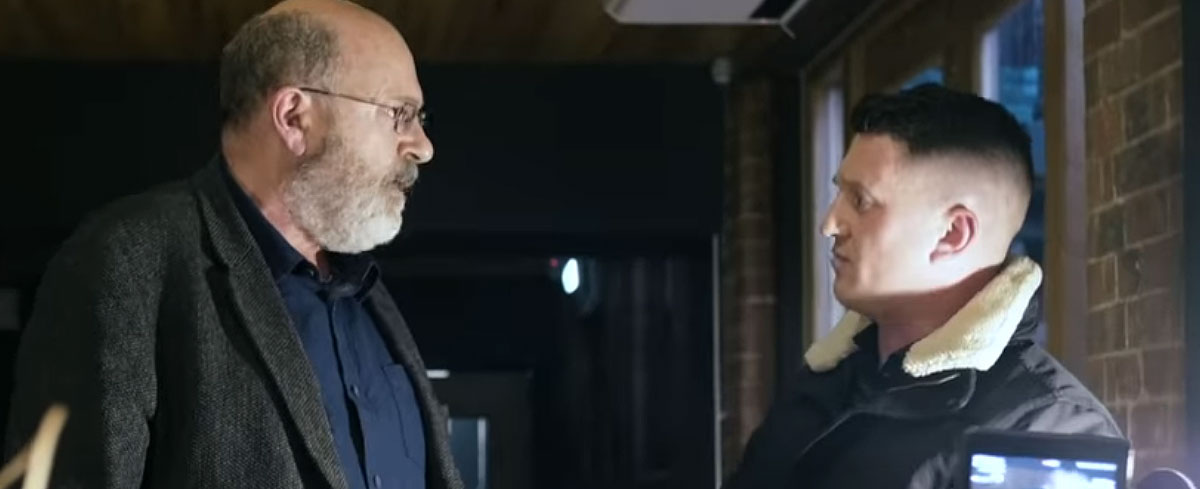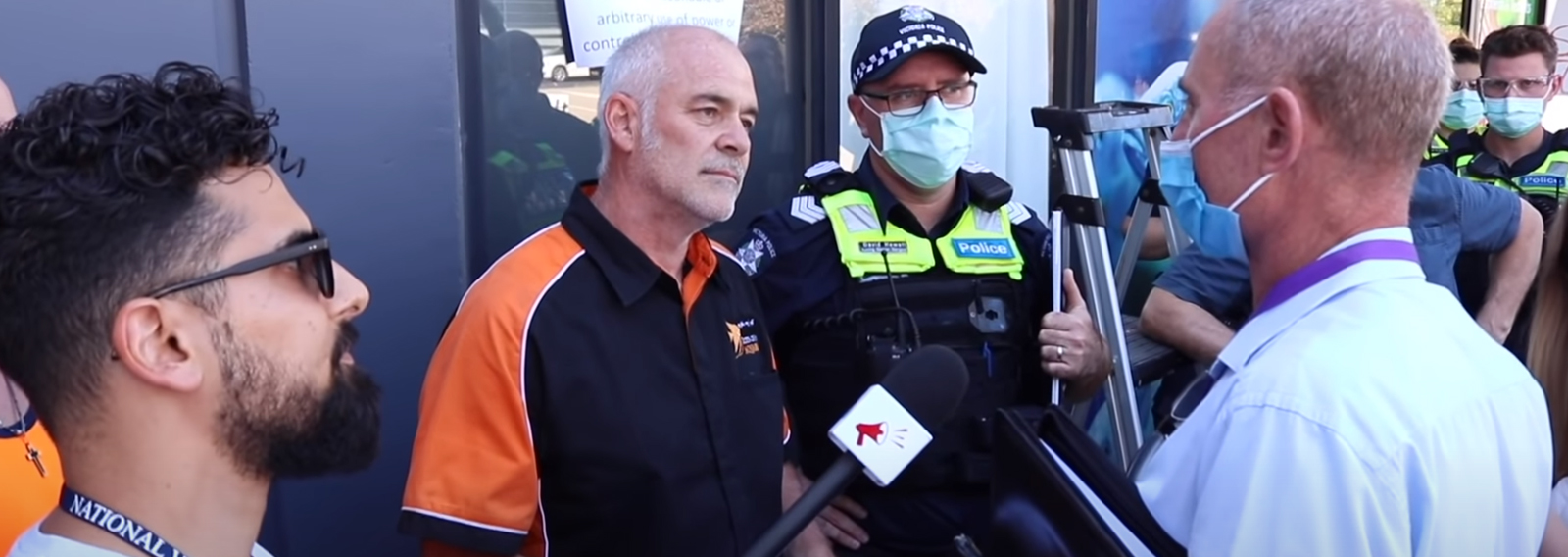The issue of election fraud faced intense scrutiny following the 2020 United States’ presidential election. Though Donald Trump was unsuccessful in proving his now-infamous allegations, some polls indicate that half of American voters remain suspicious that voter fraud helped Joe Biden to victory. And while Trump’s claims were roundly condemned by the corporate press, those same outlets — from CNN to NBC to The New York Times — had no qualms warning of electoral vulnerabilities prior to the 2020 result.
That is America. But what about in Australia? Are our elections secure — or are they vulnerable to the level of fraud that could ultimately swing the outcome of a vote?
It is often said that Australia’s electoral systems are among the best in the world. But a 2015 University of Sydney study on election integrity found that Australia ranks just 34th out of 139 nations — behind New Zealand, Canada, Lithuania, Costa Rica, and many European countries.
For years, there has been a rising chorus of voices highlighting the spectre of voter fraud. In a 2000 television interview, now retired Liberal MP Hon Christopher Pyne went on record to say, “There are a lot of people out there who have been involved in electoral frauds for purposes of preselections or elections who are too terrified to come forward and talk about it.” Alex Howan, a NSW Liberal Party vice president, has likewise stated that “Electoral fraud, malpractice and errors are a common feature of the Australian electoral system.”
Electoral commissioners have made similar admissions. According to NSW electoral commissioners R. Cundy and Ian Dickson, “that the electoral system is open to manipulation is beyond question… fraudulent enrolment is almost impossible to prevent.” Even a visiting UK election commissioner, Richard Mawrey QC, remarked that “Australia’s postal voting system is a recipe for voting frauds,” and that “if the avenues for vote frauds exist, then one can expect that they will be used, due to the incentives of political power.”
New South Wales’ Mark Latham MLC, who sought to oust John Howard as Prime Minister at the 2004 federal election, warns that, “It’s quite possible in Australia… that we’ve notionally elected governments that don’t deserve to be there, [where] a fair counting of the votes would dictate that the legitimate government of the day wasn’t actually elected.” Retired politicians Nick Minchin, Peter King and Ross Cameron have all likewise agreed that voter fraud is a significant problem that has been swept under the carpet by the Australian Electoral Commission (AEC).
Documented Voter Fraud Cases in Australia
Following the 2016 federal election, the Sydney Morning Herald reported that over 18,000 letters were sent by the AEC to voters who had cast fraudulent votes by voting more than once. A further 18,000 such letters were sent following the 2013 election. None of these people faced prosecution. During the same-sex plebiscite, 248,000 envelopes sent to Australian homes were marked “return to sender” for having an invalid address. These glaring irregularities were never forwarded to or investigated by the AEC, who had provided the addresses.
Another blunder was made very public when the AEC was forced to re-run the Western Australia Senate election in 2013 after 1,370 ballot papers went missing. This debacle cost taxpayers $24 million and led to the resignation of two AEC commissioners. But once again, the scandal was never investigated, leaving questions about why the papers disappeared, how, or even who discovered the anomaly.
Lex Stewart, former President of Vote Australia, has uncovered many more unpublished instances of voter fraud. He lodged a statutory declaration after the 2007 federal election with evidence that 200 of John Howard’s ballot papers went missing from the Epping West polling booth. Howard lost his seat by a narrow margin. Both the AEC and the Joint Standing Committee on Electoral Matters (JSCEM) refused to countenance the allegations. Stewart has likewise sounded the alarm that,
The AEC Electoral Commissioner admitted to a parliamentary committee that just shortly before the 2015 New South Wales state election, the NSW electoral roll contained 139,898 more names than the federal electoral roll for NSW, and also that there were 102,427 electors enrolled at different addresses.
Indeed, in a 2019 JSCEM inquiry submission, Lex Stewart listed over a dozen cases of alleged voter fraud spanning three decades, some of which resulted in an MP losing their seat, including:
- Joan Chambers losing Ballarat South by 104 votes (1988)
- ‘Underwater’ address enrolments discovered in Bribie Island (1989)
- Alasdair Webster losing Macquarie by 164 votes (1993)
- Frank Tanti losing Mundingburra by 16 votes (1993)
- Larry Anthony losing Richmond by 301 votes (2004)
- Multiple voting in the Werriwa by-election (2005)
- 500 false enrolments discovered in Kingsford Smith (2013)
- Up to 5,000 false enrolments discovered in Paramatta (2013)
- Sophie Mirabella losing Indi by 500 votes (2013)
- Charles Casuscelli narrowly losing Strathfield (2015)
- Chris Holstein narrowly losing Gosford (2015)
- Louise Markus narrowly losing Macquarie (2016)
Lex Stewart is friends with a man who was stabbed and bashed for speaking up about preselection and electoral fraud within the Labor Party. His friend remains nameless for the sake of his safety, but his story appeared on the front page of the Daily Telegraph in 1999. Confessing to fraudulent voter activity he once engaged in, the man testified:
We used to do that all the time when I was in the ALP. Sussex Street headquarters would give us a list of 600 names, and there was a group of us — at least a dozen, perhaps 20 — and we would go from polling booth to polling booth, voting in different names. Sometimes we didn’t even bother finishing the list, and by mid-afternoon we would all go to the pub… [We did this in] federal elections, state elections [and] council elections. It’s been happening for 10 to 15 years that I know of. And we never got caught or questioned.

Branch stacking and other fraudulent activity has a long and sordid history in Australian politics. During 2020, major fraud was exposed in Victoria’s Labor party. This echoed events uncovered by the Shepherdson Inquiry in Queensland. ALP member Karen Ehrmann ultimately served prison time for electoral fraud, and she maintained that she was merely the ‘patsy’ and that many others in her party were guilty of the same activities during the late 80s and early 90s.
Voting in the name of the dead is a well-known tactic of those who would use fraud to gain electoral victory. In a humorous (but possibly apocryphal) anecdote, then Prime Minister Gough Whitlam is alleged to have confronted a colleague for losing a Sydney seat, saying, “Comrade, how negligent of you. To lose a seat in which there is not one but three cemeteries is unforgivable.” Likewise, “vote early, vote often” is a slogan long associated with the Australian Labor Party — though the Liberal Party has also had its fair share of such scandals.
Appearing on Outsiders, Lex Stewart explained that there has been almost one branch stacking scandal exposed in Australia every year for the last ten years. He warned that our nation’s electoral roll is seriously lacking in integrity; that bad laws are enabling and protecting voter fraud; and that under our current system, the AEC is practically unaccountable for its many clear failings.
A leading voice on electoral integrity in Australia today, Lex Stewart acknowledges his debt to the late Dr Amy McGrath OAM. McGrath made 17 submissions to various parliamentary inquiries, most of which were ignored — and she penned seven books on Australian election fraud.
Official Inaction on Election Integrity
So why has Australia’s government not acted on these issues? This is the million-dollar question. There has been no shortage of inquiries, reports and recommendations aimed at securing Australia’s electoral integrity. In the JSCEM’s Report on the conduct of the 2016 federal election and matters related thereto, released in November 2018, the Executive Summary drew particular attention to
Two matters [that] remain outstanding from this Committee’s predecessor’s report: electoral roll divergence and harmonisation, and the introduction of voter ID for federal elections. Addressing these serious issues of enfranchisement and surety of the electoral process are important to maintain a robust electoral system.
These issues are canvassed in the report’s recommendations. Recommendation 12 calls for “photographic ID such as a drivers licence, passport, or proof of age card,” among other options like a Medicare card, senior concession card, or even a ‘voter ID’ card. And Recommendation 25 proposes “a national rollout of Electronic Certified Lists” to be “fully funded and implemented prior to the 2019 federal election.” Neither were enacted in time for that election.
This only follows a pattern of official negligence spanning some twenty years. The Australian National Audit Office (ANAO) has released six reports from 2002 to 2015 calling attention to these issues. Writes Lex Stewart, “These ANAO reports get tabled in Parliament but have been ignored by journalists, ministers and their staff.” He harbours “well-founded concerns that electoral rolls could contain thousands of false enrolments, sufficient to pervert the outcome of election results in marginal seats, and with possibly million-dollar effects on the electoral funding dispersed to those not entitled.”
Stewart draws particular attention to the issue of validity or false enrolments. He acknowledges that the AEC does practice some safeguarding measures such as ‘continuous roll update’ and the requirement of ID evidence for voters to enrol or update their details. But he warns that,
This process is wide open to rorting, because once you have one false or dead person on the roll, then unscrupulous persons can [make] false enrolments by forging that signature, and the AEC does not enquire into signatures — in fact it has no capacity to verify signatures.
The 2001-2002 ANAO report, entitled Integrity of the Electoral Roll, concluded that Australia’s electoral roll is “one of high integrity and that it can be relied on for electoral purposes”. Even so, it revealed that 4.4 percent of the 12.6 million people on the electoral roll (over 550,000 names) had records that were unable to be matched elsewhere. If false enrolments and ‘cemetery votes’ have been taking place, warns Stewart, this is where they would be hiding. The report made twelve recommendations to help address these anomalies.
Two audits later, in 2009-2010, ANAO released another report which warned that “the most significant long-term issue for the AEC remains the state of the electoral roll.” In other words, despite the recommendations made by the ANAO during the previous two audits, Australia’s electoral roll was in a deficient state. Most alarmingly, it came to light that the AEC was at this time still “in the process of responding to Audit Report 2003-04”.
In the 2015-2016 report, which had as its aim “to assess the adequacy and effectiveness of the AEC’s implementation of those recommendations relating to improving the accuracy and completeness of the electoral roll” from previous audits, the ANAO provided a grim assessment:
The actions taken by the AEC prior to the 2013 election in response to previously-agreed ANAO recommendations have not adequately and effectively addressed the matters that led to recommendations being made.
And:
The findings of this audit are consistent with the findings of the first two follow-up audits and are in contrast to the advice provided by the AEC to the Joint Standing Committee on Electoral Matters’ inquiry in 2014 that all recommendations in Audit Report No.28 2009–10 had been completed by May 2013.
In other words, the AEC had failed to take action on the ANAO recommendations spanning the previous 15 years. And worse, as summarised by Lex Stewart, the AEC had effectively lied to the JSCEM to cover for its lack of action. Says Stewart, “the AEC has ‘stonewalled’ the efforts of the ANAO in its reports for years, and as a consequence, the integrity of the electoral roll… is now severely lacking.” In his estimate, the AEC presides over ‘an electoral roll riddled with an estimated 200,000 false enrolments that could allow massive vote frauds to pervert the result of the next elections.”
How Can Australia Secure Its Elections?
There are three solutions that can and must be enacted as a matter of urgency, none of which are controversial or particularly expensive — and all of which have been recommended by various reports spanning two decades. First, legislation must be passed requiring voters to present ID before they are allowed to vote, including for postal voting. Second, while the paper ballot system should stay in place, a digital electoral roll must be introduced to prevent a person from casting their vote at one polling station before moving on to cast additional votes elsewhere. Third, the electoral roll must be cleaned to remove the thousands of deceased, unverifiable and false enrolments.
In his submission, Lex Stewart makes the very valid point that, given its abject failure to enact the many recommendations put to it over a twenty-year period, the Australian Electoral Commission should be abolished in its entirety. In its place, a new apparatus should be set up under the public service, one directly accountable to the government. Such is the system we had from 1901 to 1983, and it was far more functional than the AEC has proven to be.
Stewart makes several other simple but practical recommendations in his submission. He suggests that we repeal the law that prevents electoral funding for a candidate or party that obtains less than four percent of the primary vote. This is inherently anti-competitive and anti-democratic, he reasons, since it favours major parties and presents an unfair disincentive to smaller rivals.
In addition to voter ID on election day, says Stewart, we must require proper identification before admitting a person onto the electoral roll in the first place. To ensure the integrity of our electoral roll, he also recommends reinstating the door-knocking ‘habitation reviews’ that were required for years until they were “curiously removed” from the legislation in 1995.
Additionally, Stewart argues that we must reduce pre-poll and postal voting as much as possible. Opening up a longer window in which people can vote provides greater opportunity for voter fraud, and it also means that early voters don’t have access to the information released by candidates and parties shortly before election day. As the law currently stands, there is too broad an eligibility criteria for pre-poll and postal voting. This must be tightened, he contends, and violations should actually be prosecuted, which has thus far not been taking place.
Stewart further recommends several election day changes. One is issuing pens instead of pencils at polling booths to make it harder for ballot papers to be altered. Another is to install security cameras at polling places to deter vote fraudsters and to provide evidence for investigations of voter fraud, should they be required.
Finally, Stewart draws attention to an odd inclusion in section 361 of the Commonwealth Electoral Act which forbids anyone — including even the High Court of Australia — from enquiring into the correctness of the electoral roll. Given the thousands of false enrolments that his organisation has found over the years, he contends that “this is a ridiculous situation that needs to be fixed urgently” so that these incidents can be scrutinised and set right.
Free, fair and transparent elections are the foundation of a healthy democracy. If we don’t have confidence in Australia’s elections, we cannot be sure that the government in power was duly elected by the people and is actually representing the interests of Australia’s citizens. Securing our electoral system is in the best interests of all who desire to advance Australia fair.
Originally published at the Canberra Declaration.



















